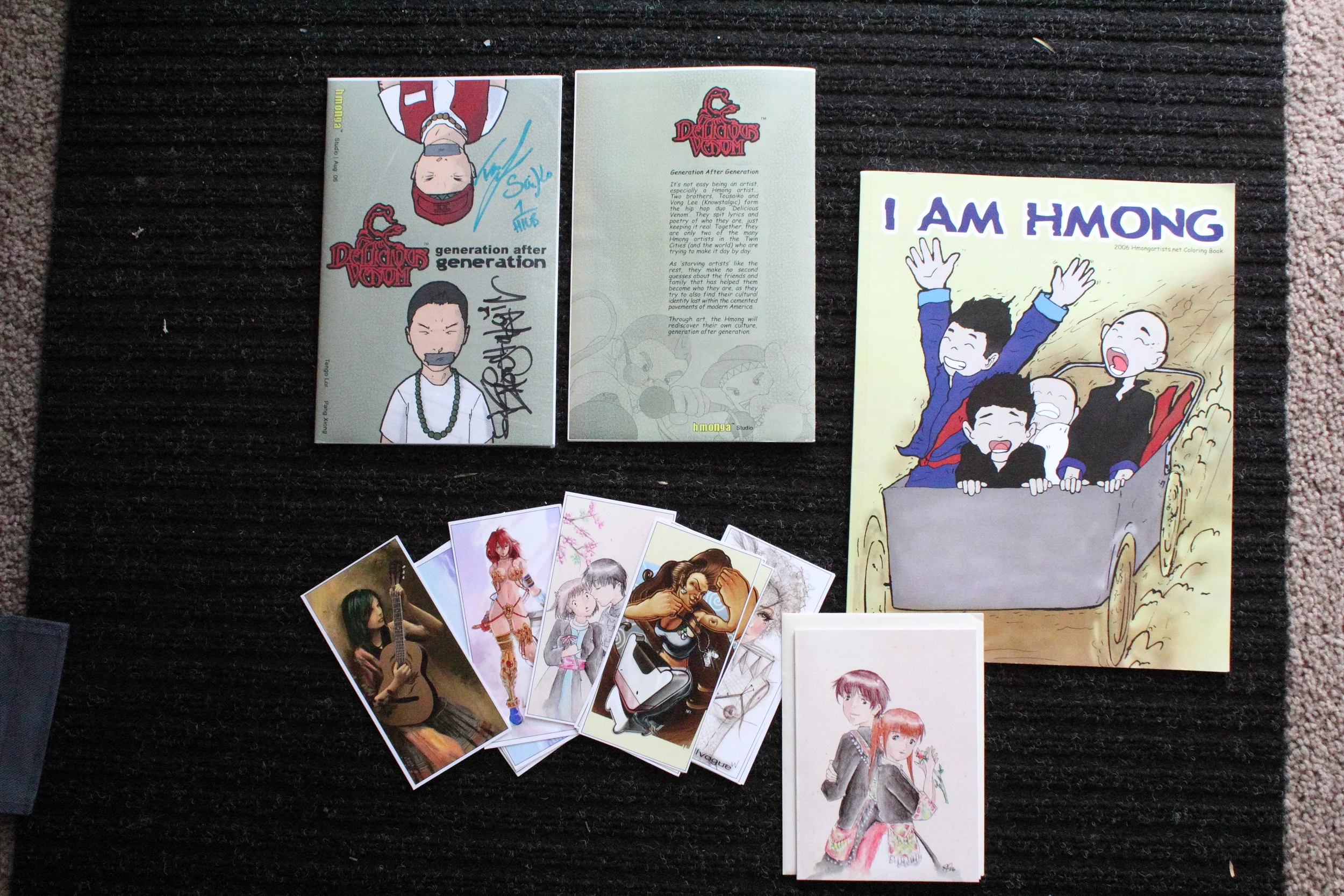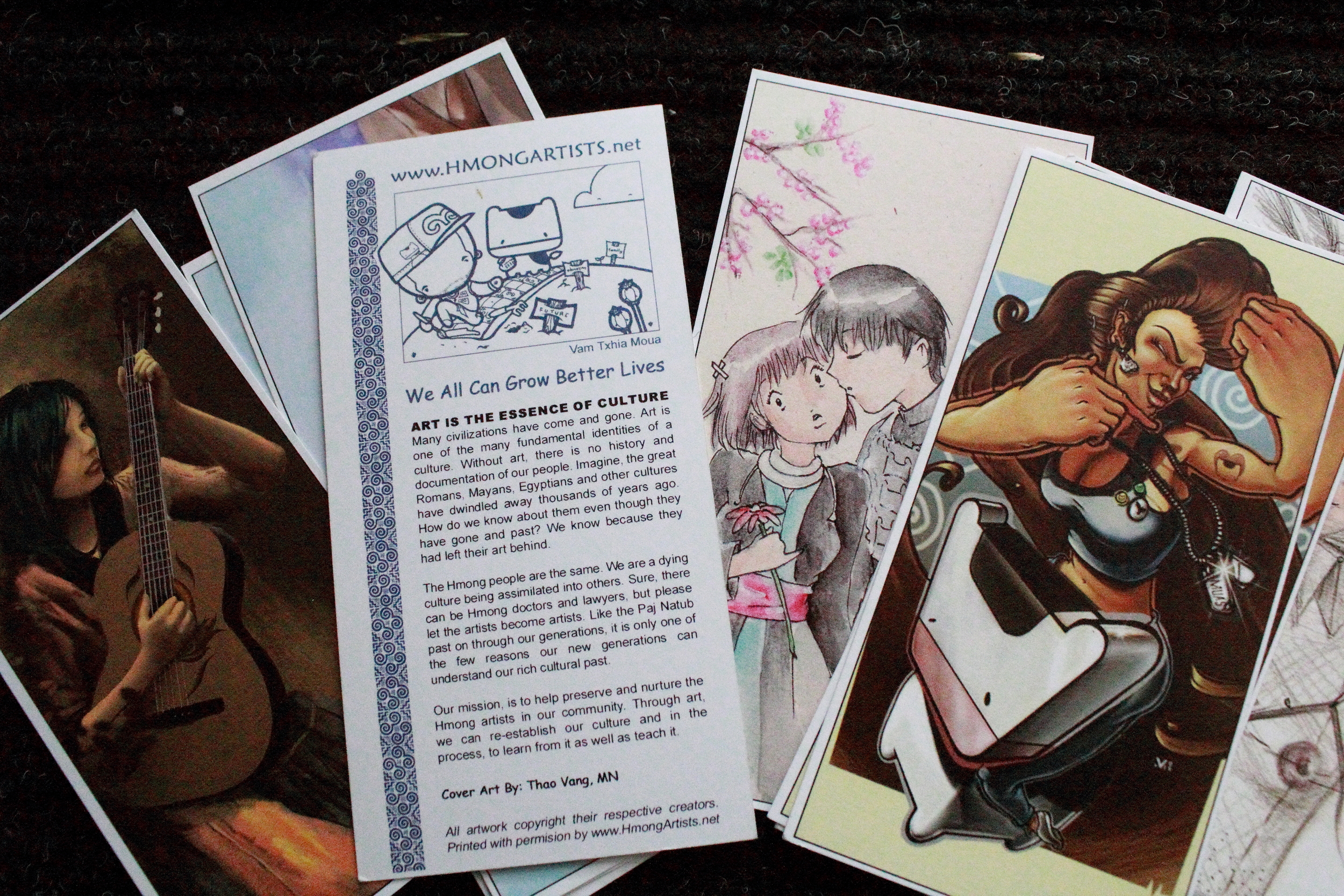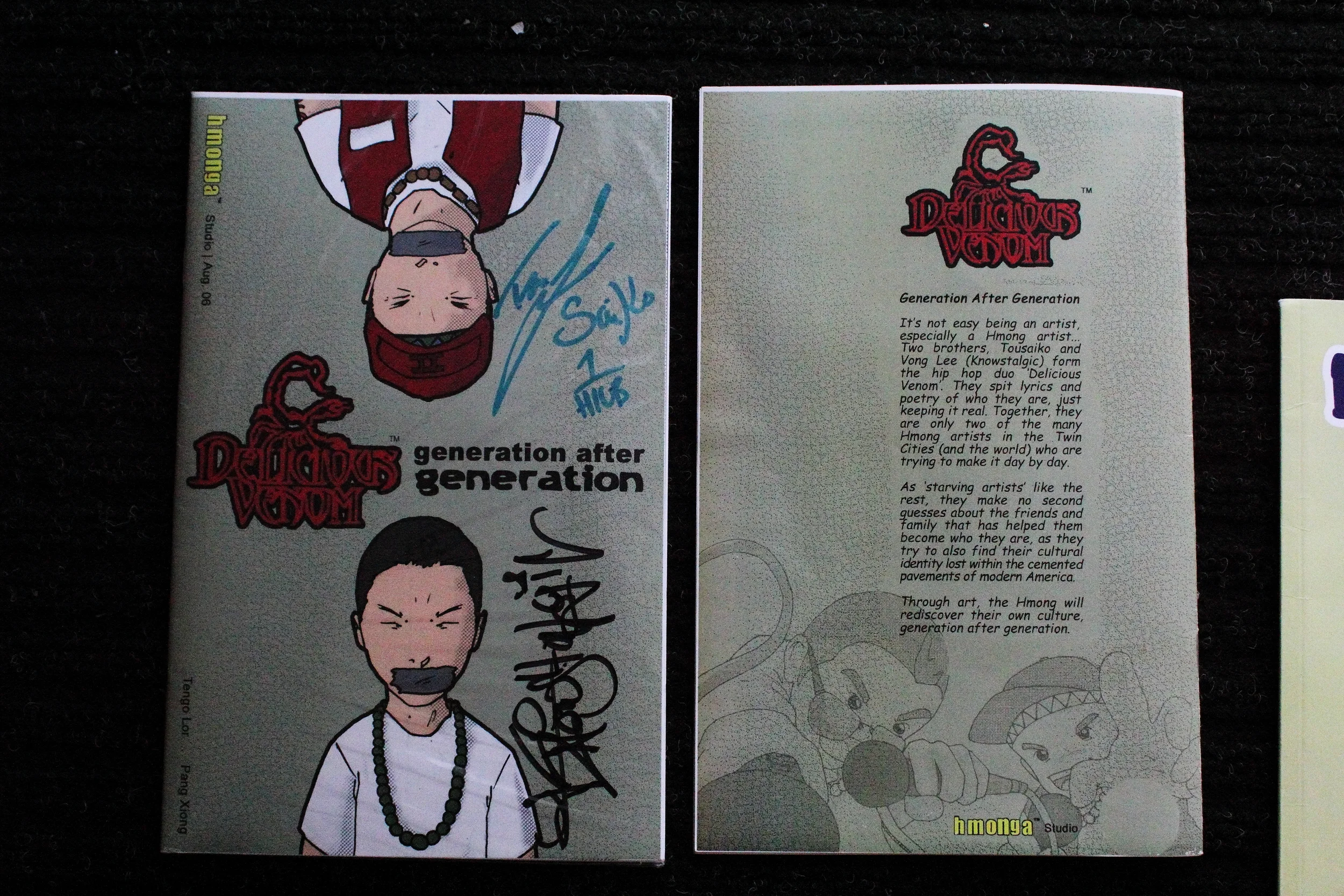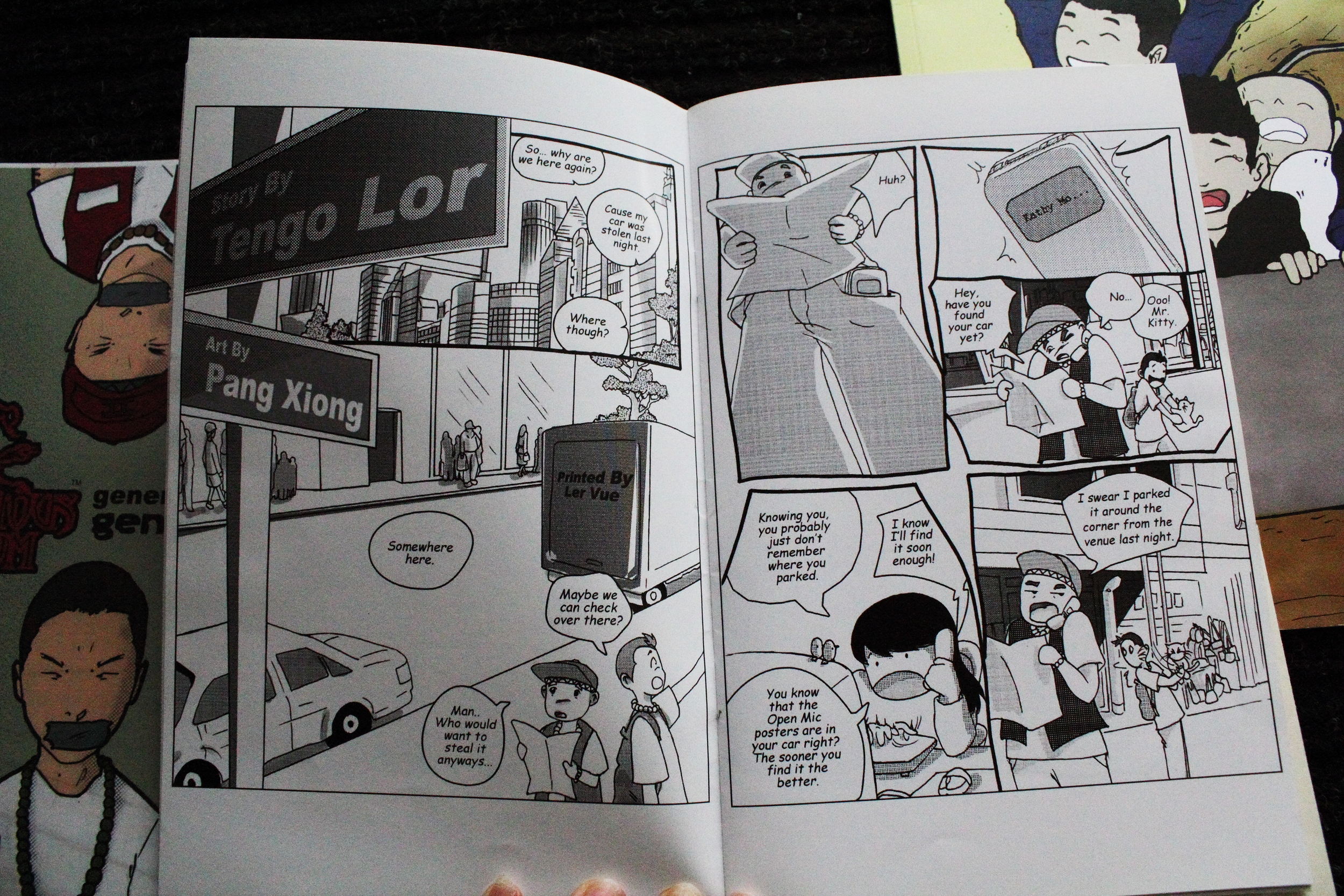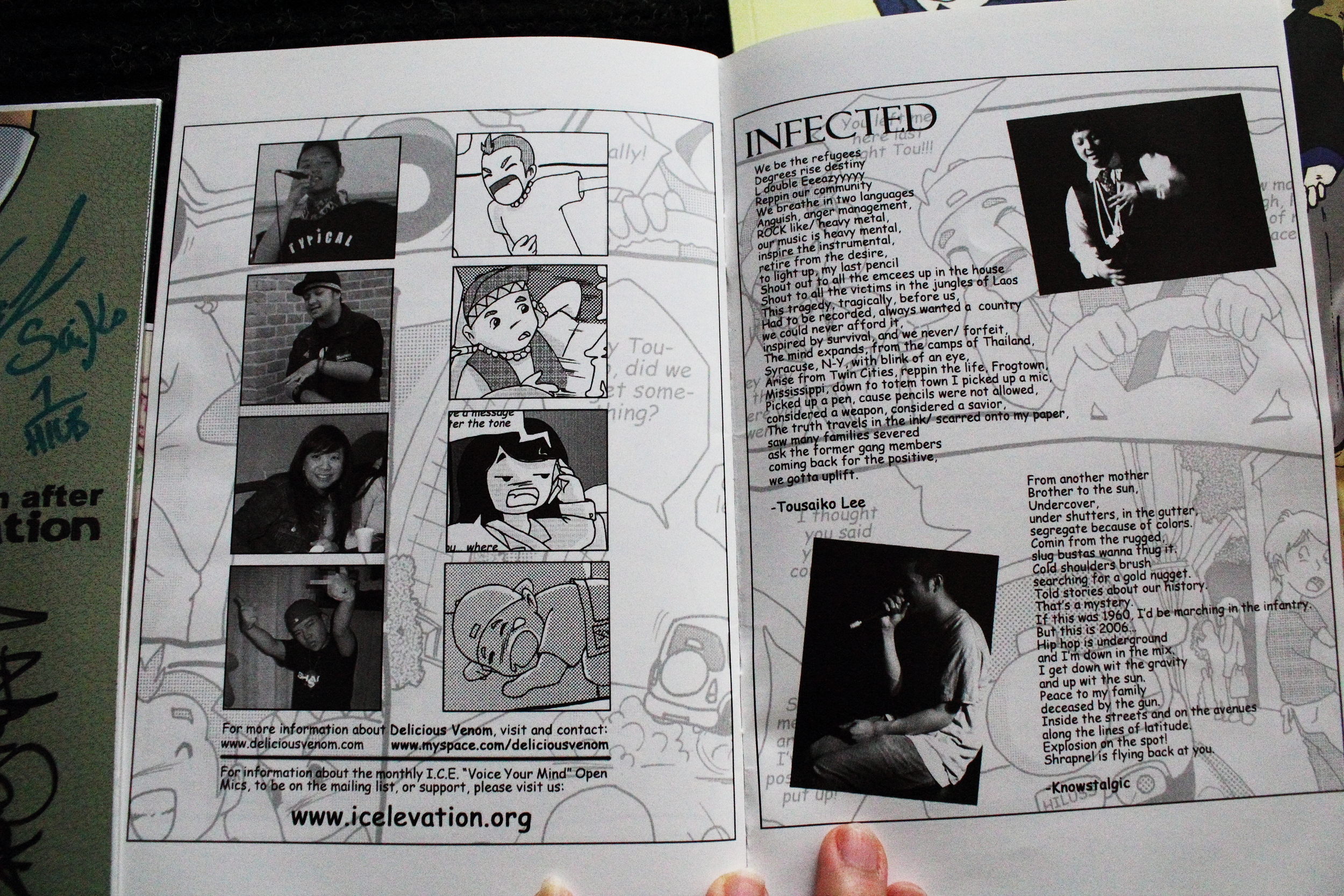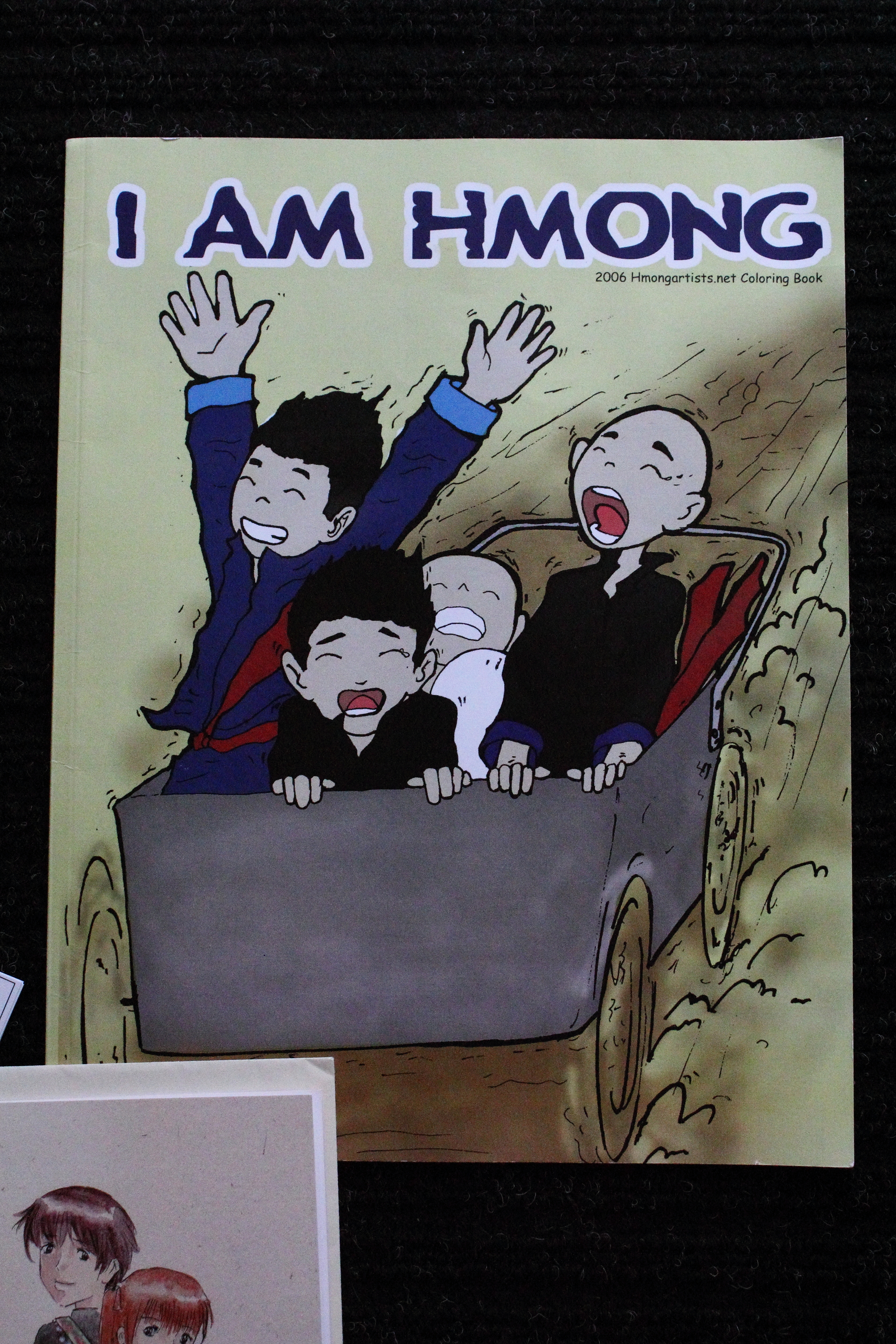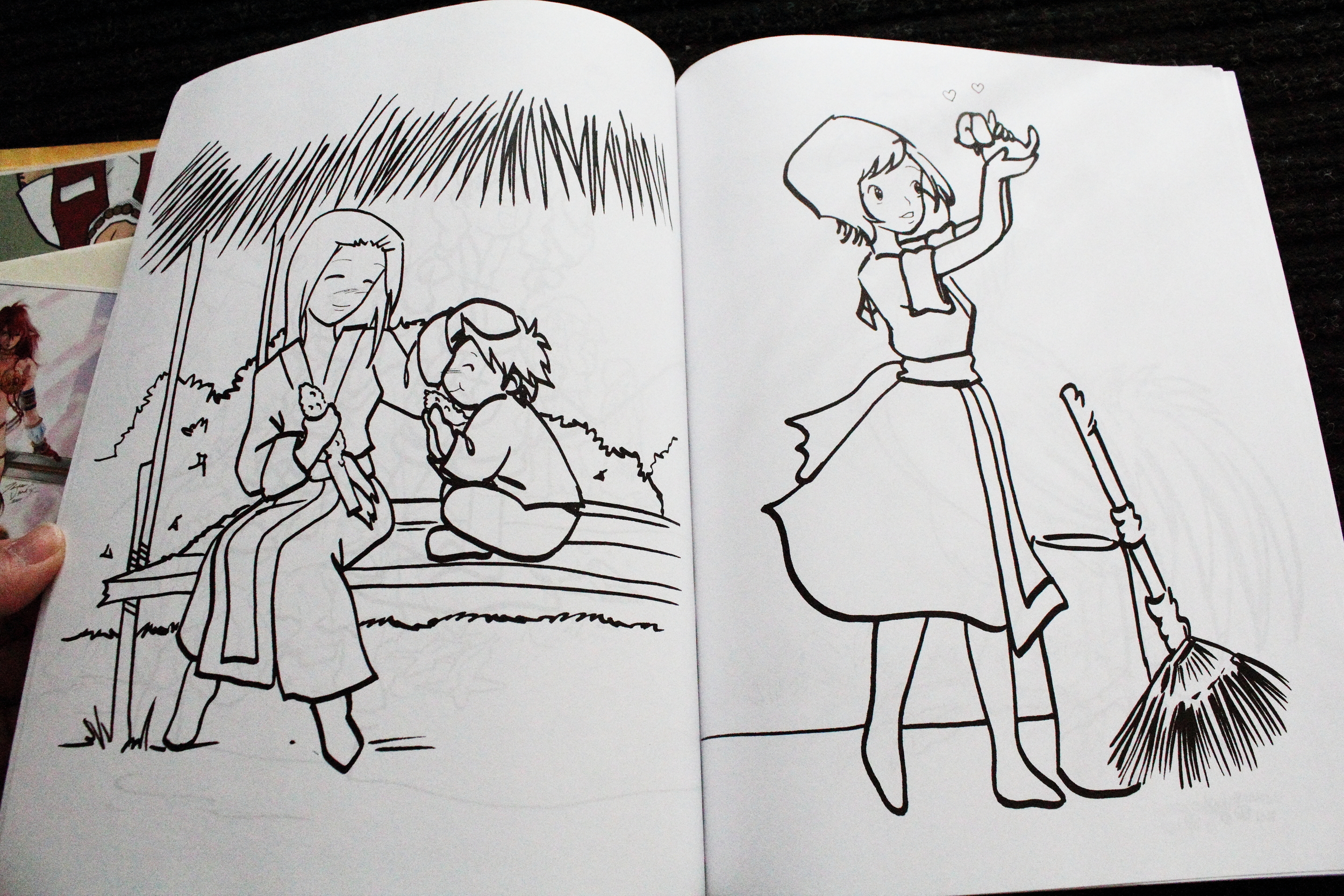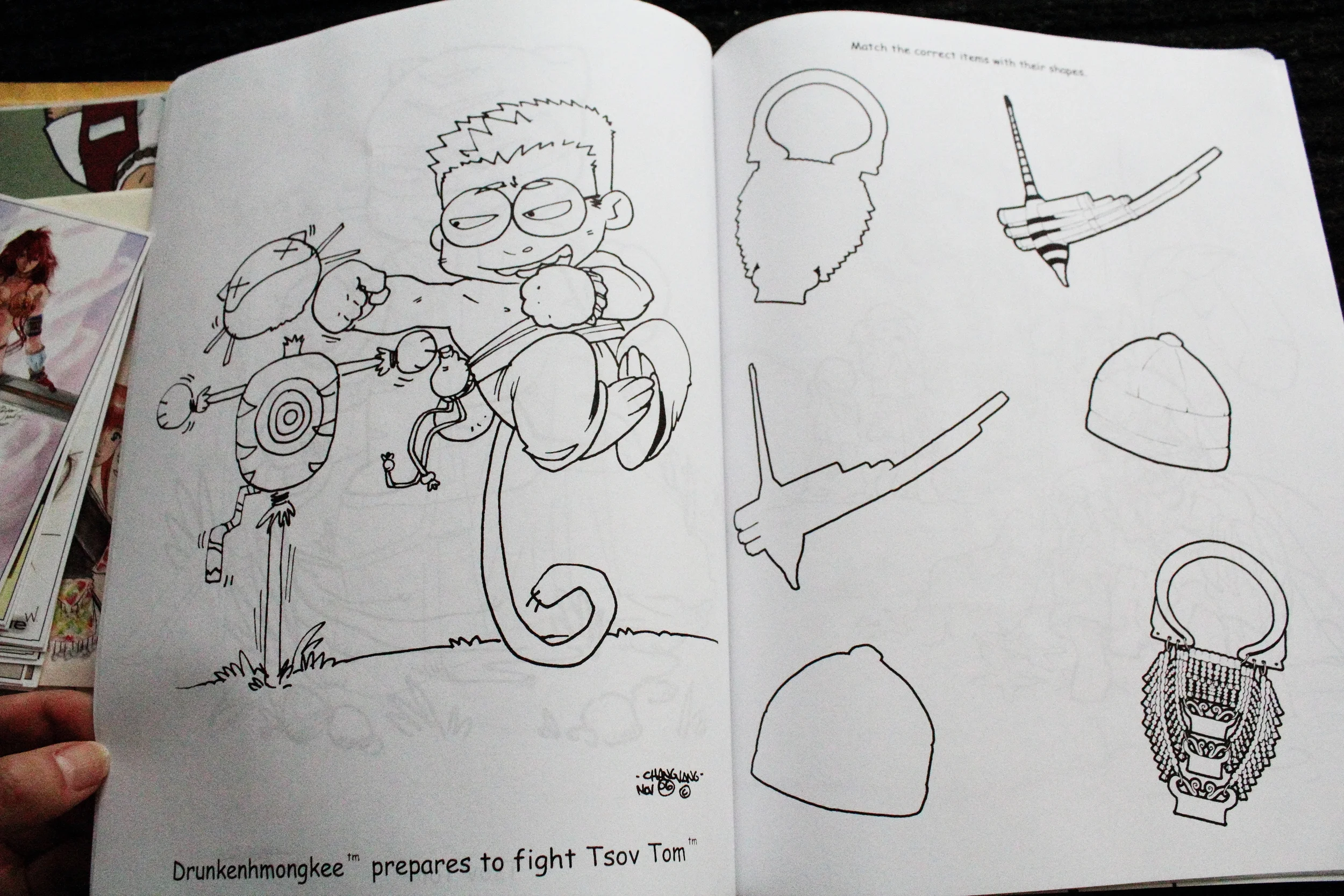Quote-Unquote-Hmong-Artists
In 2005, a group of friends and I founded the first anime/manga club (Fans Revolution) at my high-school. I sold a copy of the Fans Rev. Coloring book-2nd issue, to Tengo Lor, who I met through an online artist network called Hmongartist.net. He was actively advocating for Hmong visual artist, and he gifted me with a variety of collectibles from active artists affiliated with Hmongartist.net among other organizations during that time. I was shocked to find these promotional items in a pile of crap that I was going to toss.
Hmongartist.net/ Hmong Artist Network
Since arriving to America the communist take-over of South East Asia, the Hmong people immigrated to the United States and elsewhere in the world to flee from persecution for siding with the Americans during the war. To "succeed" the American dream, most elders told their children to get a higher education and to become lawyers and doctors. For the young children who had their hearts in arts, sometimes it was shunned upon. It wasn't until recently in the past years that the Hmong art community has bloomed so much, especially in the metropolitan areas of Minnesota. There, through art, Hmong artists and enthusiast has come together to build a community in support of one another.
ART IS THE ESSENCE OF CULTURE
Many civilizations have come and gone. Art is one of the many fundamental identities of a culture. Without art, there is no history and documentation of our people. Imagine, the great Romans, Mayans, Egyptians and other cultures have dwindled away thousands of years ago. How do we know about them even though they have gone and past? We know because they had left their art behind.
The Hmong people are the same. We are a dying culture being assimilated into others. Sure, there can be Hmong doctors and lawyers, but please let the artists become artists. Like the Paj Ntaub past on through our generations, it is only one of the few reasons our new generations can understand our rich cultural past.
Our mission, is to help preserve and nurture the Hmong artists in our community. Through art, we can re-establish our culture and in the process, to learn from it as well as teach it. -- Tengo Lor, Hmong Artists Staff
When the internet was still dial-up and DSL was the fastest way to connect with like minded individuals, Hmong Artist Network (no longer active) and the Center for Hmong Arts and Talent challenged my perception of what it means to be Hmong in America. It is still uncommon for Hmong people to pursue anything other than being a doctor, lawyer or someone who brings in the money. In high-school I found solace in these platforms which encouraged exploration of identity and conversations through creative expression.
For the longest time I thought Hmongartist.net was a Center for Hmong Arts and Talent space. As I look through these promotional items, Hmongartists.net is a website owned by Hmong Artist Network, a collective and network of artist who created a space for artists working in Hmong to engage, express and share their experiences. It was through this platform that I began to contemplate the words Hmong artist and Hmong art.
In the early 2000s, many of the artist I met online were from areas of America where there were larger concentrations of Hmong. Growing up in a smaller city in Wisconsin, I could count all the Hmong people that I knew on my fingers. Though I could not fully relate to the Hmong which I saw represented on Hmongartist.net, I felt the need to be active in this platform. It was an exciting time to know that I was not alone in the world, and though I could not agree with everything I was seeing, I was not fully equipped to explain why some images do not sit well with me.
Hmong Artists
What does it mean to be Hmong? A question that I have asked myself multiple times, a question that contemplates where Hmong fit into the conversations regarding race, history, and human experiences. It is a question that blurs my elder’s definitions of Hmong, it is a conversation starter to engage everyone to speak about their experiences. In the words of a friend, it is very much about being the “author of your own life”. Today, the word Hmong holds diasporic history, collective memories, and complex visual and oral histories. Then, when the word Hmong and artists come together what comes to your mind?
My Roots, Selfportrait, 2007
Unlike my high school self, I now contemplate the words Hmong artists and Hmong art. I am hesitant to carelessly throw around these words as I question the intentions and processes of someone’s Hmong art, and where it comes from. Are the words Hmong artists and Hmong art used to describe a collection of voices and experiences? Are Hmong artists exploring art and their expression through Hmong lens? Then by being Hmong and an artist, make Hmong art even if the works produced do not engage in the processes of arts and crafts of the Hmong?
It has been 10 months since I moved to Minnesota and I fear that what is understood as Hmong art to the general community, are works of art which I believe lacks critical engagement and integrity. I find various Hmong artists work problematic. Specifically, Hmong art where women and men are represented only in traditional Hmong clothes, surrounded by popular textile motifs often for the aesthetics of making something looking pretty. What are these artists really saying to their audience? It is problematic when these works of art are sold, mass produced and consumed without considering how violent an image can be. Is this due to the lack of intentionality in the works produced, lack of awareness of Hmong visual history and who consumes art? Are people desensitized to art because everyone is bombarded by images? Is it because anything and everything is art? I am itching to have more conversations with people regarding their working processes to better understand for myself what Hmong art is.
Artists Working in Hmong
Since living in Minnesota, I have come into contact with various artists from all over the United States and elsewhere in the world, who are challenging Hmong experiences through critical engagement in various mediums. To name a few, Pao Houa Her, Jennifer Tshab Her, Sieng Lee, Mai Kue Vang, Vanghoua Anthony Vue, Fres Thao, Andre Yang, Song Yer Thao, Magnolia Yang-Sao-Yia , Victoria Kue, Sao Her...have been engaging in art, identity, movements, and community. In their works, they deconstruct traditions, confront histories, trauma, patriarchy and create spaces for engagement.
As Burlee Vang writes in the book, How Do I Begin? A Hmong American Literary Anthology:
“You can't separate yourself from your ethnicity. But ethnicity shouldn’t be for the artist an object of exoticism or a kind of artistic limitation. I am less interested in my being Hmong (unless it serves as a crucial theme or topic) and more concerned with trying to reveal some universal experience or truth, despite how alien the world, situation, or characters I am presenting might be to readers. I am interested in transcending boundaries, to make familiar the unfamiliar, extraordinary. This is how an artist can connect successfully to the audience. This too, I think, is how one can produce that which is eternal. There's one thing I am certain of. Something undeniably spiritual happens when you devote yourself to an art form. By using words as a kind of ethereal lens, one is able to see the soul with some clarity. Art can reveal its elusive shape. . .”
Vang's connection with his work is inseparable from who he is and it is less about being Hmong, but is not something that should be seen as separate from his works. I too hope that artists are seeking truth in their works and are not exotifying and appropriating cultures without trying to reveal some universal experience. That is not to say that artists should not engage in recontextualizing traditional textiles, sounds, oral traditions, or borrowing from other cultures, but to cautiously incorporate or deconstruct these processes from a place of understanding beyond something that looks and feels pleasing, let alone claiming to invent new forms of art without considering the hard work that came before.
As I am becoming more aware of who I am, what I do, and how I communicate to people, I also hope that there is a stronger sense of community support for artists working in Hmong or who has worked in Hmong. Seeing how Hmong people have such strong and often spiritual connections with traditions in oral, visual and performance, I expect no less of quote-unquote-Hmong-artists to engage and challenge histories, traditions, communities, and audiences to engage in Hmong art. However as an artist who works in Hmong, though highly influenced by my identity, my work goes beyond me being Hmong, and as Vang suggests, it is more or less about making a connection with someone. At the moment, I am really obsessed with making a mark, drawing a line and filling space. It brings me pleasure, gives me pain, and if I can bring people to my world, it is a win-win for everyone.
